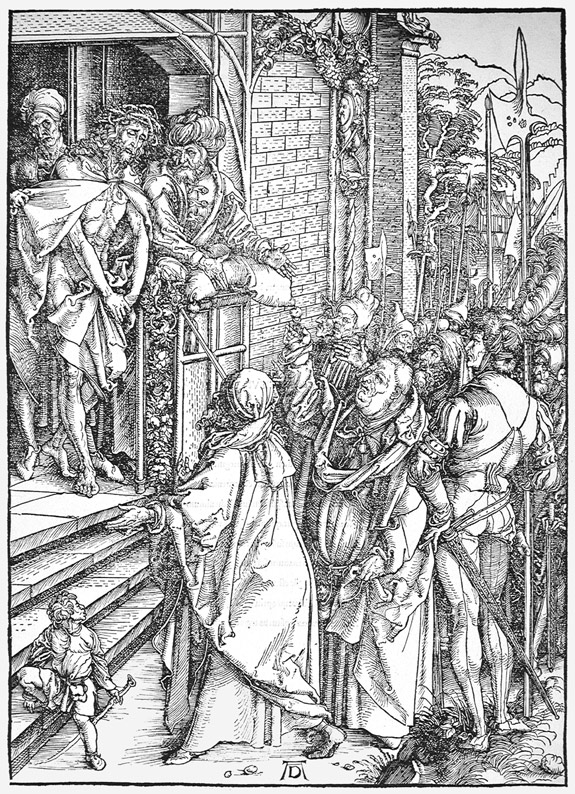|
ALBRECHT DÜRER
(Nuremberg 1471 – 1528 Nuremberg)
Ecce Homo

Ecce Homo (Christ shown to the People by Pontius Pilot)
Ref: Bartsch 9, Hollstein 118
395 x 283 mm
Woodcut, c1498-1500.
The block signed with the AD monogram.
From Dürer’s own 1511 edition of the Great Passion,
with Latin text on the reverse (specially composed for Dürer by the
Benedictine monk Cheldonius).
Sold
To view a higher resolution version of this print, please click this link: Ecce Homo
|
|
Additional
Information about the Print
Dürer was the great pioneer of printmaking in Northern Europe.
He transformed woodcut design from its medieval origins into a
Renaissance art form.
In 1511 he published several of his cycles of woodcuts with New Testament
themes.
That which is known as The Great Passion, (to distinguish it
from the Small Passion) is not only large in size, with single images filling the full folio page,
but monumental in concept and design.
This subject was rarely portrayed before the Renaissance.
Woodcut is a relief technique. The areas of the block left raised receive the ink for printing.
The lines of the design are drawn onto the woodblock (usually plank wood cut along the grain from fruit trees or sycamore)
and the surface of the block cut away leaving only the lines standing proud, to receive the ink.
The block is printed onto dampened paper on a lever-operated press, which exerts an even pressure in a single downwards movement.
For more information, and further examples of woodcuts and Relief forms of printmaking, please explore the Woodcuts pages in the Techniques section of this website.
|